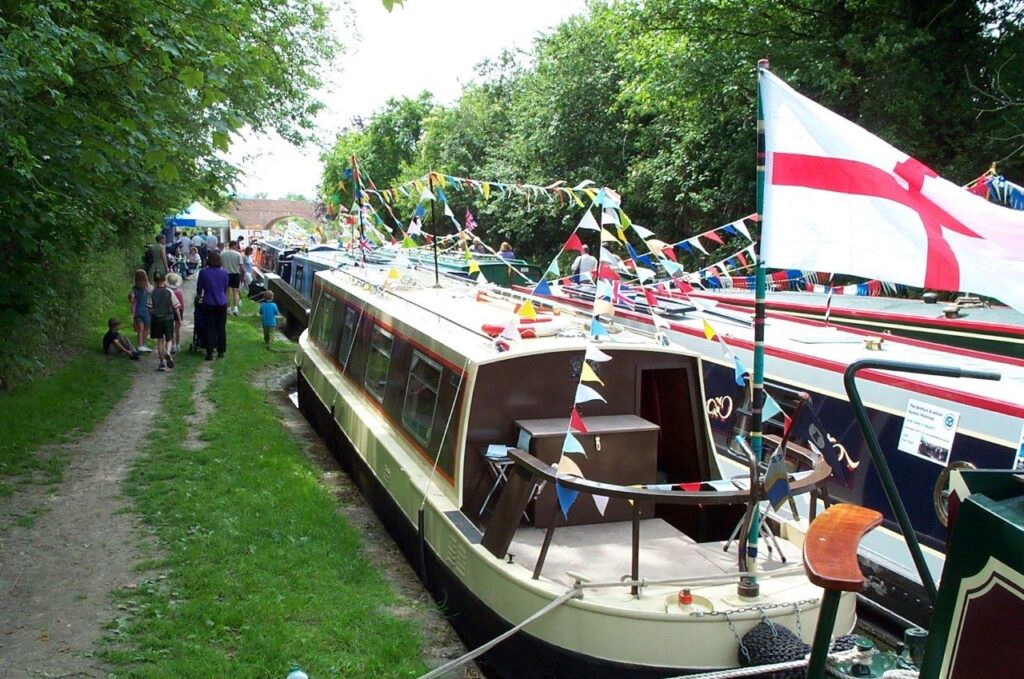Do you remember the Wendover/Tring Festivals? Did you attend? They started in 1990 over the late May Bank Holiday after the farmer John Brown offered his land for the festival. These were arranged for the next 20 years, till unfortunately WAT lost the use of the field.
The origins go back to a Rally of boaters visiting the Wendover Canal each year and being awarded a plaque from the Grand Union Canal Society. During these events up to 70 boats were recorded attending, all battling their way along a weeded and silted canal.
From the first festival, the boats came, and the public attended in increasingly vast numbers. The profits Improved each year, which enabled the start of the restoration from the stop lock at Little Tring. During the earlier years Herts Caravan Club also attended with 70 units.
A scaffold bridge was erected for easy access to the festival site. This was originally supplied by Malcolm Miles and later sponsored by Wyvern Hire Base. It was needed because boats were moored along both sides of the canal. Mooring planks were an essential part of the boater’s kit.
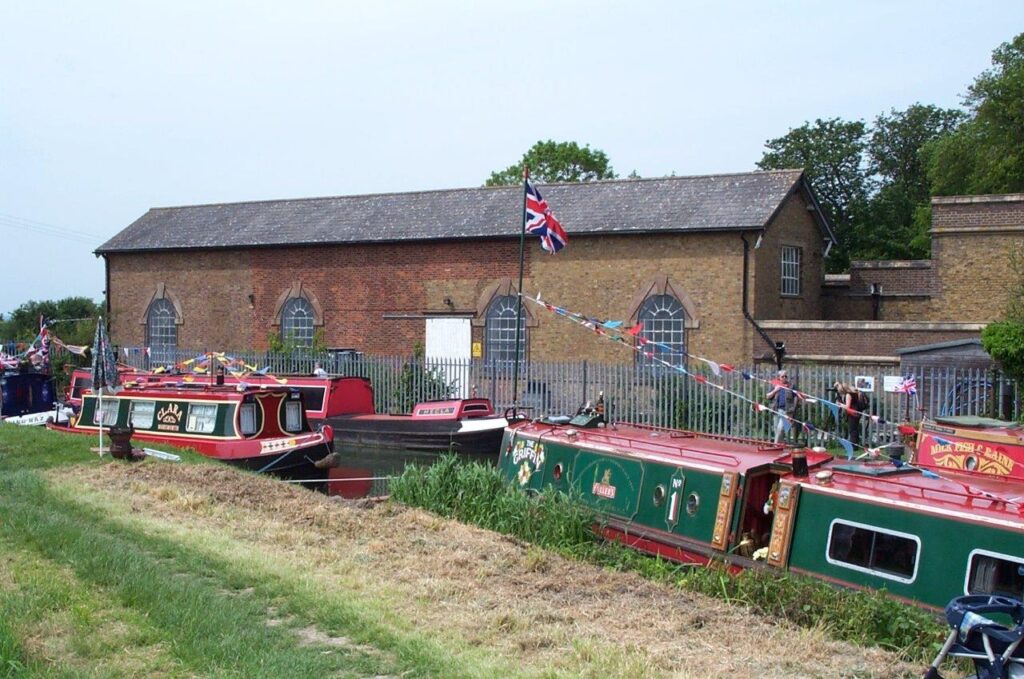
Another display was the Agfa Hot Air Balloon, it did not ascend but lit up the sky at night with its burners. It was tethered to a tractor and conveniently positioned cars. The bar was run by the Lionharts Boat Club, while many of the volunteers were provided by the Dunstable & District Boat Club. The local St John’s Ambulance group attended each year camping on site to give full medical coverage.
The festival contained an arena with various performances, a marquee for crafts, a tea marquee, a bar, fun fair and many outside stalls. One hot year, a flatbed lorry turned up on the Monday morning and requested a last minute pitch. After handing over cash, they were found a suitable site. At this point they started off loading hundreds of boxes of strawberries, by late afternoon all were sold. Every festival was only successful because of the hard work of many people, and as the scale got larger so did the need for help. To man the gates, taking the entrance fee over 2 days was a mammoth task, but every year it worked.
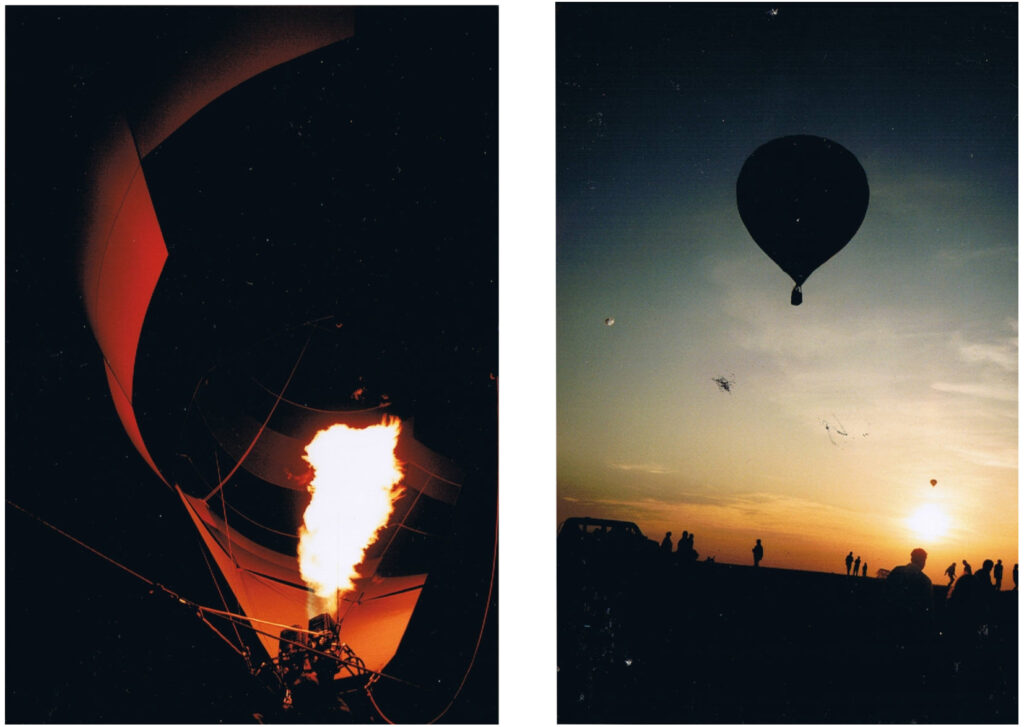
The ambiance of the festival came from this non-commercial feeling, maybe it was not perfect, but problems were always solved.
The boats started arriving during the previous week, this was to bag the best mooring. OK if you were retired, but many volunteers spent many evenings cruising from their moorings to attend. The actual site lay out could not be started till the Friday. It entailed mowing the field, marking out the pitches and erecting fencing around the site. This was mostly down to the restoration volunteers who erected marquees, signposts, and became delivery transporters of table, chairs and many other essential items. The festival chairman stood with a plan directing everyone to various corners of the field.
On Saturday morning the trade and charity organisations would start to arrive, all needing to find their pitch. This day was mostly for the boaters, with entertainment in the evening. Sunday and Monday were for the public, and they came in their droves.
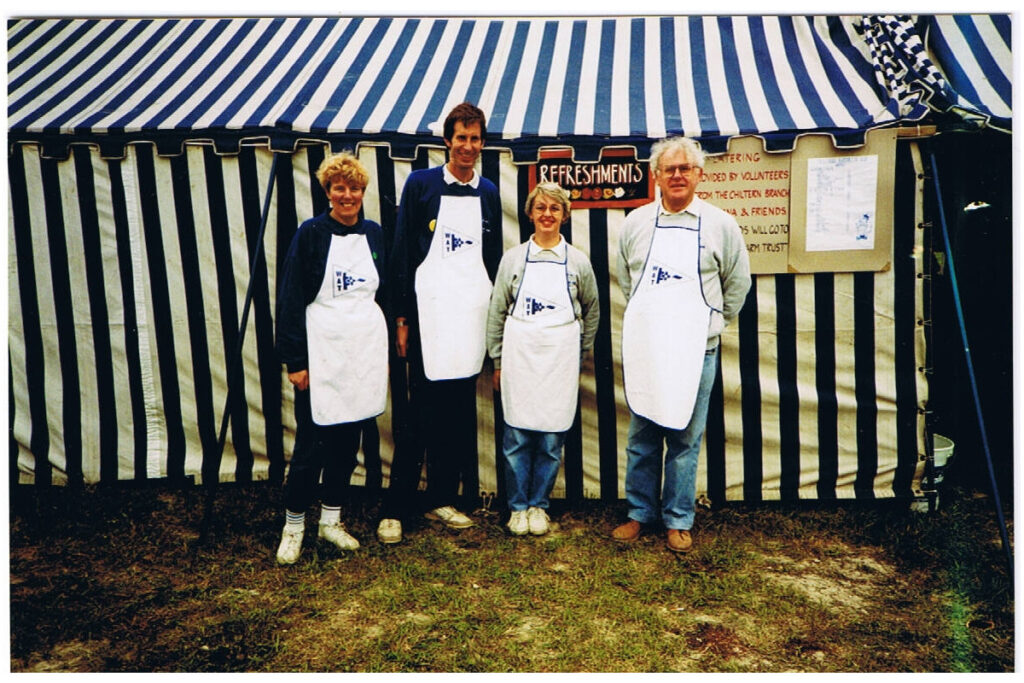
1993 was particularly windy, with marquees taking the full force and some lightweight charity gazebos even taking flight. Luckily WRG were in charge of the parking area, as on wet years this entailed a lot of pushing cars out of the mud. The year 2000 weather was particularly bad in the previous week, which needed a digger to bring hard core for the road entrance. The festival committee agonised as to whether cancellation would be the best option, but game fully carried on. The weather improved, many other local events were closed, and the punters poured through the gates.
The profits increased year by year, till 2005 a massive £54,000 was achieved. But the British weather had other ideas, 2006, 2007 and 2008 suffered severely from mud. So, to cover that eventuality, the committee decided to increase to a 3-day festival. By these years, the ownership of the field had changed hands and its future use was in doubt. An event was arranged at Boxmoor in 2011, which although successful seemed many miles from the Wendover Canal. 2012 was cancelled due to it clashing with the Queens Jubilee celebrations. A wise decision in retrospect, as in the event the weather was awful.
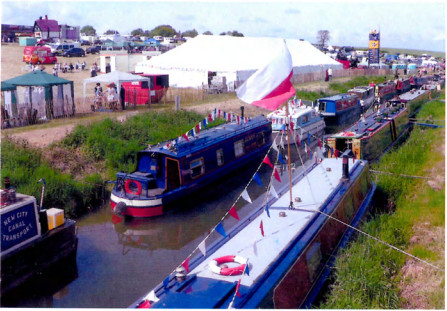
At this point the festival committee felt they were running out of ideas for future venues, so disbanded. Not only was this the Trust’s future funding for the restoration lost, but also a band of committed helpers were involved each year. Over the subsequent 10 years these have sadly drifted away or became too old for physical help.
Funding for the restoration is now from grants, local councils, legacies, and hopefully lottery future awards. The canal looks amazingly different to the days when scrub bashing along a dry bed was all that could be completed by volunteers.
